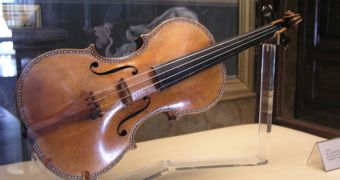Texas A&M University professor emeritus of biochemistry, Joseph Nagyvary, hypothesized more than 33 years ago that the famous violins built by Antonio Stradivari (1644 – 1737) and contemporary Guarneri del Gesu were actually treated with large amounts of chemicals, which directly led to their pristine sound. However, most people thought of him as being crazy, because the belief in the international music community was that these violins, out of which only 600 have remained to date, were made of unadulterated wood, and that the craftsmanship was responsible for their amazingly-clear sounds.
"All of my research over the years was based on the assumption that the wood of the great masters underwent an aggressive chemical treatment, and this had a direct role in creating the great sound of the Stradivarius and the Guarneri," Nagyvary says. Publishing his findings in the scientific journal Public Library of Science ONE (PloSONE), the scientist says that he has used minute samples of wood from a few Stradivarius violins for his analysis. He got the samples from restaurateurs who were conducting maintenance work on the precious violins.
By burning the small splinters to ash, he has been able to identify the chemicals that broke loose from them in the fumes. He has managed to name borax, fluorides, chromium and iron salts among those found in the wood in higher amounts. "Borax has a long history as a preservative, going back to the ancient Egyptians, who used it in mummification and later as an insecticide," he explains.
"The presence of these chemicals all points to collaboration between the violin makers and the local drugstore and druggist at the time. Their probable intent was to treat the wood for preservation purposes. Both Stradivari and Guarneri would have wanted to treat their violins to prevent worms from eating away the wood, because worm infestations were very widespread at that time," Nagyvary adds.
"These current research results are highly gratifying for me, because they prove what I first proposed 33 years ago, that – contrary to common wisdom – the wood of the great masters was not natural, but chemically treated by certain minerals, some of which I had predicted at the outset. Based on my lifetime experimentations with similar chemicals, we have reason to believe that they could have played a major role in the great tonal refinement of the antique instruments," he concludes.

 14 DAY TRIAL //
14 DAY TRIAL //